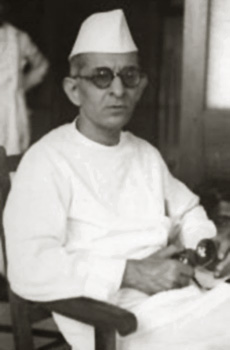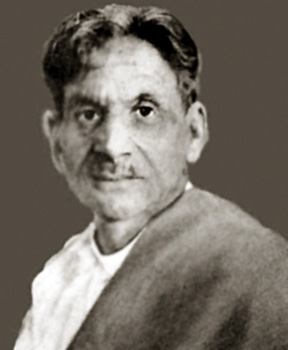 Prose in modern Gujarati literature is best seen in the works of some powerful storytellers. Some of the most prominent prose writers of the time are K. M. Munshi (1887-1971), Ramanlal V. Desai (1890-1954), and Dhoomketu (1892-1965). Prose in modern Gujarati literature can be best understood by taking a look at these different writers and their works.
Prose in modern Gujarati literature is best seen in the works of some powerful storytellers. Some of the most prominent prose writers of the time are K. M. Munshi (1887-1971), Ramanlal V. Desai (1890-1954), and Dhoomketu (1892-1965). Prose in modern Gujarati literature can be best understood by taking a look at these different writers and their works.
K. M. Munshi
Munshi wrote five social novels, such as Vend Vasulat (1913) and Swapnadrishta (1924); seven historical novels, including Patanani Prabhuta (1916), Gujaratno Nath (1917), Rajadhiraj (1918), and Prithvivallabh (1920); and four mythological novels, such as Lopamudra (1930) and Bhagwan Parashuram (1926). His last work, Krishnavatar (1963-74), in eight parts, was left incomplete. Munshi`s social novels, with their romantic atmosphere and autobiographical touches, were quite popular. But his historical novels, said to have been inspired by Alexander Dumas and Sir Walter Scott, took Gujarat by storm. It may be mentioned here that when he was accused of distorting history to suit his creative purpose he defended himself by saying that he was writing novels and not history.
Munshi also wrote a number of social plays. These include Brahmacharyashram (1931) and Dr. Madhurika (1936). Among the mythological plays are Pausanik Natako, Dhruvaswanuni Devi and Lopamudra (1930). Munshi`s other prose writings included biographies of Narasingh Mehta and Narmad, autobiographical works like Adadhe Raste (1943), Swapanasiddihini, Shodhman (1953), and critical writing such as Ketlak Lekho (1926). He did not want to be relegated to narrow confines in life or literature, and thus went on to cover a vast area including a considerable amount of original writing in English language. Thus he was considered a literary giant.
Ramanlal Desai
 Ramanlal Desai was equally popular and admired for his social and political novels, such as Jayant (1925) and Bharelo Agni (1935), his monumental novel Gramalakshmi, in four parts, which deals with the theme of rural resurgence, and Pralay (1950), a pessimistic, futuristic novel about the impending destruction of humankind. Desai`s play Samyukta (1915) was successfully staged. He wanted to transform the amateur Gujarati stage but felt compelled to write novels, although he did write some more plays. Jhakal (1932) and Pankaj (1935) are Desai`s short story collections. Some of his stories are quite striking, but his novels are more appreciated. Apsara (1933-49) in five parts is a study of the life of prostitutes. He published some autobiographical and critical writing and a couple of poetry collections, too. With his profuse and variegated writings attractively styled, though subdued and restrained in contrast to Munshi`s turbulent style, Desai`s romantic depiction of middle-class life in Gujarat held the attention of his readers for a long time.
Ramanlal Desai was equally popular and admired for his social and political novels, such as Jayant (1925) and Bharelo Agni (1935), his monumental novel Gramalakshmi, in four parts, which deals with the theme of rural resurgence, and Pralay (1950), a pessimistic, futuristic novel about the impending destruction of humankind. Desai`s play Samyukta (1915) was successfully staged. He wanted to transform the amateur Gujarati stage but felt compelled to write novels, although he did write some more plays. Jhakal (1932) and Pankaj (1935) are Desai`s short story collections. Some of his stories are quite striking, but his novels are more appreciated. Apsara (1933-49) in five parts is a study of the life of prostitutes. He published some autobiographical and critical writing and a couple of poetry collections, too. With his profuse and variegated writings attractively styled, though subdued and restrained in contrast to Munshi`s turbulent style, Desai`s romantic depiction of middle-class life in Gujarat held the attention of his readers for a long time.
Dhoomketu
Dhoomketu`s strength lay in writing short stories. Dhansukhlal Mehta, Malayanil, and Munshi did write short stories before him, but the Gujarati short story is believed to have come into its own with Dhoomketu. His short stories appeared in four successive volumes, Tanakhamandal (1926, 1928, 1932, 1934). Dhoomketu enlarged the canvas of the Gujarati short story, depicting characters in their natural habitat, speaking their native language. Dhoomketu also wrote social novels like Rajmugut and Jivananan Khander (1963) and historical novels such as Chauladevi (1940) and Amrapali (1954), and a couple of autobiographical works as well. But short stories overshadowed all his other writings.
Another short story writer of this period was Dhansukhlal Mehta (1890-1974). Apparently written in a lighter vein, his short stories in collections like Hum, Sarala, ane Biji Vato (1924) and Ame Bedhan (1936) have a refined aesthetic sense, deep thinking, and subtle expressions. He regaled his readers and also provided them with an enjoyable literary experience.
Thus the prose in modern Gujarati literature was greatly strengthened by the above discussed writers.













